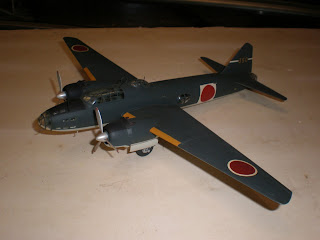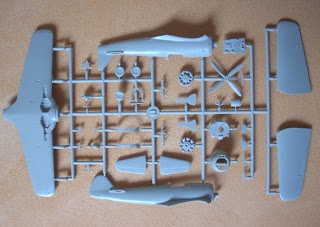In the age of the internet it is quite difficult, even for modelling old timers, to remember the days when colour information was hard to come by and even when found was sparse to the point of still leaving many unanswered and perhaps unanswerable questions. Nowadays questions can be asked and answered in seconds in a format that at the same time communicates them worldwide and to a huge audience. Whereas before, the rare and valuable revelations in sometimes difficult to obtain magazines and books, if not taken on trust, were subject to lengthy and by necessity often private correspondence between individuals. The cliques of knowledge were perhaps smaller and more intimate then but they have survived into the internet age, albeit sometimes in more adversarial and competitive forms.

It is perhaps ironic that at a time when the raw colour data was available in much greater quantity the method of analysing and reporting on it was relatively crude (with a few notable and honourable exceptions). Today the modelling and research community (with the inevitable crossovers between the two) is arguably more exacting when considering matters of colour but there is much less available to be exacting about and a tendency to forget, disregard or discredit much of what went before. Of course those are generalisations because in reality the subject of historic colour is beset by a sliding scale of quantity, quality, accessibility and understanding. There is still a tendency for modellers to adopt the "I chose to paint it this way so it must be right" school of research, but to be fair the avalanche of diverse information makes such positions entirely understandable, albeit potentially misinforming.

One of the early attempts to put the colours of Japanese aeroplanes into tinlets of ready to use paint came, for UK modellers at least, in the form of the sets of "Authentics" released by Humbrol in 1967/68. Early adverts for these sets proclaimed that "Humbrol technologists are proud to introduce this authentic modellers dream paint. a new highly developed matt finish which dries in 3 minutes without brush marks and with outstanding covering power. All this is achieved by a thin film which does not obliterate minute detail. These authentic camouflage colours are the result of months of research and development to establish shades identical to the originals used."
The "Japanese Air Force" set number 8, provided the modeller with six colours, purported to be essential and appropriate for aeroplanes of both the Navy and Army. The paints included in this set were:-
HJ1 Green N.1
HJ2 A/N.2 Grey
HJ3 A.3 Green
HJ4 N.9 Mauve
HJ5 N.17 Brown
HJ6 Silver A.6
The curious disorder in this nomenclature was Humbrol's. Each set also came with a leaflet providing basic guidance as to how the colours might be used on models.
The splendid model of Hasegawa's 1/72nd scale Mitsubishi G4M1 "Betty" heading this blog was made by Owen Veal and painted using colours from the Humbrol Authentics set with N1 on the upper surfaces and A/N2 on the lower surfaces.
But where did Humbrol get the information upon which to base these colours? The clue lies in both the "official" designations used by them and the colours themselves. In 1964 the IPMS published a "Color Guide for Japanese Aircraft 1941-45" which had been prepared by
Charles "Chuck" Graham. This guide preceded
Donald W Thorpe's seminal work on Army camouflage and markings by some four years.
In a questionnaire interview with
James I Long in 1995 Mr Graham provided additional details and background for some of the colours identified in the guide. The questions and answers were subsequently published by pre-eminent researcher
James F Lansdale at
j-aircraft.com and make fascinating reading. The basis for the specific paint colours as duplicated by Humbrol were reported to be as follows:-
N.1 - Assessed from artifacts assumed to be from IJN aircraft in junk piles at or around Chinhai, Korea in 1946-47.
A/N.2 - Ditto.
A.3 - Sample of upper surface paint colour from Ki-100 at University of Illinois collection at Urbana, recorded in 1949.
N.9 - Based on written descriptions in Koku-Fan magazine and other sources referring to it as "wisteria".
N.17 - Based on a paint colour
"commonly used on vehicles, land mines and other Army equipment".
A.6 - Not mentioned, but described as
"gray" in the text of the guide.
The Humbrols Authentics set contains no acknowledgement of the source of the information and it remains unknown exactly how the data was communicated to or obtained by them. Only about 500 copies of the IPMS Guide were sold with actual painted chips and it must be presumed that Humbrol had obtained or seen one of these. Any further information or insights about this would be appreciated.
Author
René J Francillon re-published some of the colour information from the IPMS Guide in his 'Japanese Aircraft of the Pacific War', published by Putnam & Sons in 1970, again without acknowledging or crediting the original source. He included a table of colours using the same designations as the IPMS Guide but presenting printed rather than painted chips of dubious value. The Humbrol Authentics and the Francillon book cemented many of the assumptions about Japanese aeroplane colours that have survived to this day and still influence writers and hobby paint manufacturers.
Whilst the IPMS Guide had only attributed colour names incidentally to the letter & number designations, the Francillon chart included colour names, thus N1 was described as
"Dark Green", A/N2 as
"Light Grey", A3 as
"Olive Green" and N17 as
"Tan". A6 was described as
"Natural Metal Finish" but N9, that beautiful mauve indelibly associated with the "Rufe" floatplane fighter, was not mentioned at all. The profile of the "Rufe" included in the book was identified as being in
"Sky grey N8" overall so no doubt owners of the LS 1/75th kit, the IPMS Guide, the book and the Humbrol Authentics set were already scratching their heads.
In 1966 author
Richard M Bueschel published a slim volume entitled 'Japanese Aircraft Insignia, Camouflage and Markings', but this made no reference to the IPMS Guide and made no attempt to display or tabulate the colours described in the text.
Some modellers still have surviving tins of Humbrol Authentics (the old formula Humbrol paint has remarkable longevity) but the original colours can still be recreated using mixes of paints from the current Humbrol range. Email me if you would like details of these mixes to try out. If you have memories of using the Humbrol Authentics Japanese set or photographs of any models painted with the colours from it I would be delighted to hear from you. And if you happen to have a mauve "Rufe" to show us that would be wonderful!
With special thanks to
Owen Veal and
Bob Alford for the image of the Hasegawa model from Owen's collection and to
Gary Wenko for providing the superb photos of the mint Humbrol Authentics Japanese Air Force set from his personal collection.
Image credits: Hasegawa model by Owen Veal via Bob Alford; Humbrol Authentics Set & IPMS advert from Gary Wenko; Humbrol advert via http://www.aviationancestry.com/; IPMS Guide from James F Lansdale via j-aircraft.com; Bueschel book cover from author's collection.































